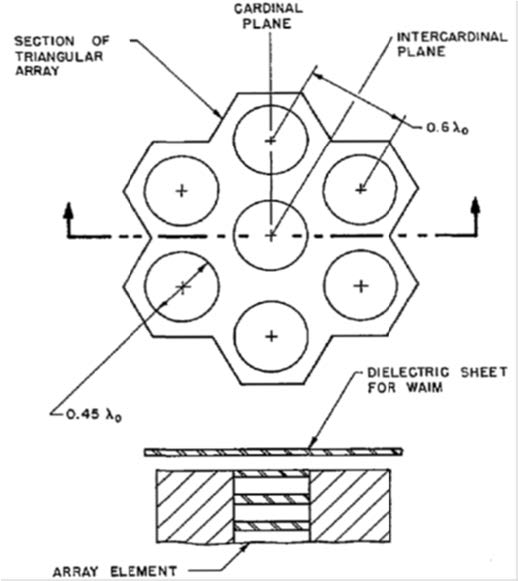
Background
Modern active array antenna systems on mobile platforms (e.g. Radar and Satcom-on-the-move applications) are often required to scan the beam over very large angular sectors (up to ±70-75 degrees). For these large scanning ranges, the well know problem of scan losses in active/phased array antennas becomes an important issue. One of the main phenomena that determine these scan losses is the dependence of the array elements’ impedance from the scanning angle. This dependence is due to the variation of the mutual coupling between the elements when the array beam is pointing at different angles. As a consequence of this variation, the antenna mismatch is increased, determining an overall antenna gain reduction. Metamaterials can be used for the realization of non-conventional Wide Angle Impedance Matching surfaces (MetaWAIM) that placed in front of the antenna can considerably improve its scanning performances (acting as an artificially engineered impedance matching layer), well beyond conventional dielectric WAIM solutions. Metamaterials and metasurfaces are structures obtained by loading standard dielectric substrates with sub-wavelength metallic and/or dielectric scatterers. The effect of this loading is a modification of the macroscopic constitutive parameters of the original material, such as permittivity and permeability, allowing the realization of structures with electromagnetic properties not normally accessible in nature.
Project description
The main objective of this project is the development of a synthesis procedure for the design of a MetaWAIM structure. In the synthesis process, the optimal geometrical layout of different metasurfaces will be determined in order to optimize the performances of the overall array antenna system. In the first step, the assessment of different unit cell metasurfaces will be performed and a final selection of the most suitable geometry will be made. The next step will consist in the creation of a proper database of the metasurface performances corresponding to different geometrical parameter settings. The final step will consist in performing the optimization process, which will identify the optimal geometry. An hardware validation will be performed in the final phase of the project.
Project organization
The work in this project will be conducted at the Optics Department of the TNO Delft premises and will be supervised by Prof. dr. G. Gerini. A second supervisor, appointed from the EM group, will provide regular consultancy and support to the project.
Contact: Prof. Dr. Giampiero Gerini; g.gerini@tue.nl